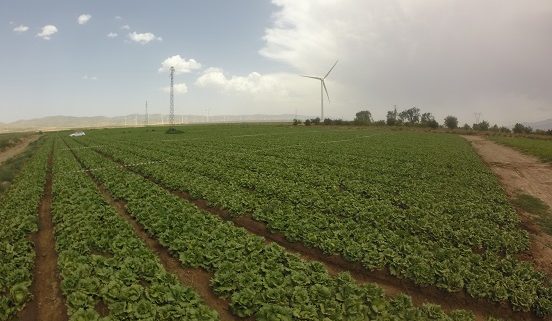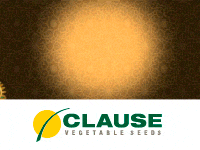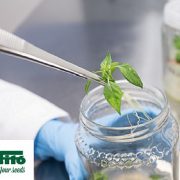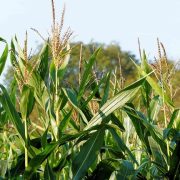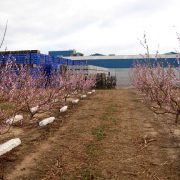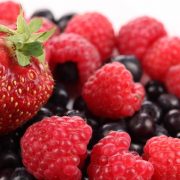Effect of drip irrigation on a sloping plot on yield and quality of Iceberg lettuce
By David Lozano, Pedro Gavilán, Rafael Baeza, Juana I. Contreras and Natividad Ruiz.(Institute of Agrarian and Fisheries Research (IFAPA), Andalusian Government. IFAPA centers of La Mojonera (Almería) and Alameda del Obispo (Córdoba))
The uniformity of distribution of the irrigation system indicates how water and fertilizers are distributed on an agricultural plot. In the case of slope drip irrigation, the differentiation of the water actually applied to each plant according to its position in the plot is especially important. In this line of work, the Irrigation Assistance System of the IFAPA (SAR-IFAPA) has carried out numerous studies of irrigation systems analysis, both at the laboratory level (Baeza et al., 2015, Contreras et al., 2015) , as in commercial farms (Lozano et al., 2014; Lozano et al., 2017).
From the results of these studies it can be concluded that, in high frequency drip irrigation (several pulses of irrigation per day), one of the most influential factors in the distribution of water and fertilizers within a plot can be the duration of the irrigation pulse. Based on this knowledge, IFAPA presented an irrigation test in collaboration with the PRIMAFLOR company. The trial was conducted within the framework of an IFAPA Project for the Transfer of Technology to Irrigation (PP.TRA.TRA201600.3). The objective was to evaluate the effect of the duration of the irrigation pulse on the yield and quality of Iceberg lettuce in a slope irrigation plot.
The test was carried out in summer cycle of Iceberg lettuce (Lactuca sativa L.) in an experimental plot (81 m x 72 m) located in Húeneja, Granada. The transversal and longitudinal slopes of the plot are descending and their value is 1.2% and 2.2% respectively. The lettuce was transplanted into cultivation beds with a planting density of 83,333 plants / ha. The transplant was performed on June 23, 2017 and the collection on August 9th, 2017.
In the collection, two categories were established depending on the size: “lettuce in fresh” of high economic value and “lettuce for industry“. The trial had three irrigation treatments with three repetitions. Each treatment meant a duration of the irrigation pulse of 10, 15 and 30 minutes. In all treatments irrigation was programmed to apply the same volume of irrigation with different number of pulses. Each plot was divided into 4 study zones. Zone 1 corresponds to the first third of the plot (higher area), zone 2 to the second third (intermediate level zone) and zones 3 and 4 were located in the last third (lower area). Zones 1 and 2 have twice as much area as zones 3 and 4. Therefore, the experimental plot was divided into 36 zones of analysis with irrigation data, production and quality parameters.
In the area of highest elevation (zone 1) and intermediate zone (zone 2) the volume applied was lower than the average volume applied to the whole plot. This is due to two factors: the first is that the irrigation system takes more than 2 minutes to fill and the second is that in the emptying phase, once the irrigation pulse is finished, the drippers in zones 1 and 2 they throw water, emptying the irrigation tapes in the last third of the plot (zones 3 and 4).
The estimation of the water needs of the crop during the trial phase (15/07 to 09/08) was 1778 m3 / ha. The average irrigation sheet applied in the trial plot was around 2000 m3 / ha (Table 1). However, the distribution of the irrigation sheets actually applied in each area was very uneven (Table 1).
Table 1. Applied irrigation sheets (m3 / ha) and yield (tons / ha) depending on the duration of the irrigation pulse and the area of the plot
| Pulso | Zona 1 | Zona 2 | Zona 3 | Zona 4 | Media | |||||
| Riego | Rdto | Riego | Rdto | Riego | Rdto | Riego | Rdto | Riego | Rdto | |
| (m3/ha) | (t/ha) | (m3/ha) | (t/ha) | (m3/ha) | (t/ha) | (m3/ha) | (t/ha) | (m3/ha) | (t/ha) | |
| 10 min | 1571 | 29.1 | 1709 | 34.5 | 2263 | 35.7 | 3420 | 31.4 | 1970 | 32.7 |
| 15 min | 1650 | 32.3 | 1755 | 34.2 | 2137 | 36.2 | 2917 | 34.2 | 2014 | 34.2 |
| 30 min | 1730 | 31.2 | 1799 | 37.0 | 2011 | 35.7 | 2413 | 33.7 | 2025 | 34.4 |
| Media | 1650 | 30.9 | 1754 | 35.2 | 2137 | 35.9 | 2917 | 33.1 | 2003 | 33.8 |
The yields are similar for irrigation pulses of 10, 15 and 30 min. However, zones 1 and 4 have lower yields than zones 2 and 3 (Table 1). The differences between yields are even greater if we only consider the ‘fresh’ production, the one with the highest commercial value. The ‘fresh’ yields are similar in zones 2 and 3, with an average of 30.9 t / ha. However, in zones 1 and 4 the average values of ‘fresh’ yield are 25.3 and 26.1 t / ha, 20% lower than zones 2 and 3.
Based on the results obtained, we can affirm that both the irrigation deficit of zone 1 and the excessive irrigation of zone 4 have negatively affected crop yield
The proportion of ‘fresh’ production with respect to total production varies depending on the irrigation sheet applied. The percentage of ‘fresh’ production is greater as the irrigation sheet is closer to the water needs of the crop (zone 2). In these cases it is around 90%. For irrigation sheets lower than the needs of the crop (zone 1) this ratio drops to 75%. For irrigation sheets far superior to the needs of the crop (zone 4) this ratio is 80%.
The average weight per iceberg lettuce destined to ‘fresh’ production remained at very similar values except in the areas of deficit irrigation (zone 1), with an average weight loss per lettuce of around 7%.
The main conclusions and recommendations of the work are:
In sloping plots, the position of the plant in the plot influences more than the duration of the irrigation pulse in the unequal spatial distribution of the applied water. The last third of a sloping plot is the one that suffers the greatest differences of irrigation sheet applied with respect to the average irrigation sheet. The first third of a sloping plot has a greater risk of receiving deficit irrigation sheets.
In sloping plots, the yields of Iceberg lettuce differ more by areas of the plot than by differences between durations of the irrigation pulse. Although, the shorter the duration of the irrigation pulse, the greater the inequality between the applied irrigation sheets and the greater the risk of loss of yield. Therefore, not recommended irrigation pulses less than 15-20 minutes.
The lower percentage of ‘fresh’ lettuce with respect to total production is produced both for deficit irrigation sheets and those that cause excessive overrun. Therefore, in crops of high added value a high uniformity of irrigation distribution leads to an increase in the economic productivity of the crop.
The average weight per lettuce only decreased in those areas where deficit irrigation sheets were applied.



